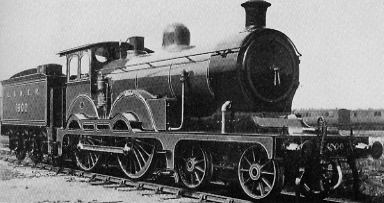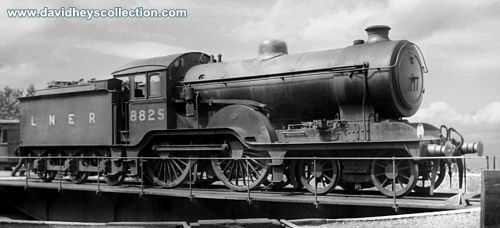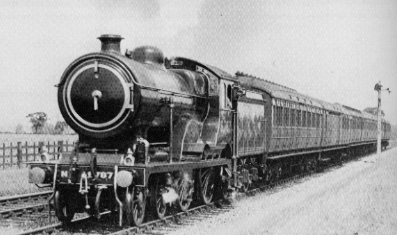
The GER D14, D15 & D16 "Claud Hamiltons"

"Claud Hamilton" was built to order and class of S46 at that time it was the GERs largest express locomotive. No.1900 was then followed by forty further locomotives built between 1900 and 1903 in four batches of ten each. These were given the classification of S46 by the GER, but quickly acquired the nickname of 'Clauds' after the pioneer locomotive. The LNER would give these initial locomotives the classification of D14.
The next batch (order D56) was started in December 1903; these had a Belpaire firebox to the design. The 4ft 9in diameter boiler was kept. In total seventy Belpaire Clauds were built between 1903 and 1911 in seven batches of ten each. These were given the GER classification of D56, while the LNER would class the Belpaire Clauds as the D15s. The last four D15s were built with superheaters.
Rebuilds of the original (D14) Clauds with Belpaire fireboxes, started in 1915. Many of these rebuilds were also fitted with Robinson superheaters.
A third variation of the Clauds was designed in 1922. This new Claud had a larger 5ft 1.125in diameter boiler, a superheater, and a Belpaire firebox. A rebuild of No.1805 to this new design, appeared just after Grouping in March 1923. This was then followed by ten of the new locomotives these were built in 1923. Although built by the LNER, these new Clauds had the GER classification of H88. Nicknamed the 'Super Clauds', the LNER then gave them the classification of D16.





When built the Clauds were quickly put to work on the principal express services, including express passenger trains from London to Ipswich, Norwich, Cromer, Clacton, and the boat trains to Parkeston Quay. Although the D14s had modest dimensions compared to later locomotives, they demonstrated some excellent performances during this period.
The Clauds most distinguished work was on The Norfolk Coast Express which ran between Liverpool Street and Cromer. While thirty years later, the streamlined B17 4-6-0s only shaved a few minutes off the running time for this service.
The introduction of the B12 4-6-0s soon displaced the Clauds from the principal routes to the Cambridge main line and various cross country routes. It was also about this time that the superheaters were being fitted. Despite their improved fuel and water economy, the displacement of the Clauds to the lesser services meant that the superheated Clauds never had the chance to demonstrate improved performances.
From 1924, the Clauds were sometimes seen on Great Northern Railway routes into King's Cross for special passenger services. Usually these would be Royal Trains to Cambridge or King's Lynn of which only two Clauds were specially allocated to haul.
In total 117 Clauds survived into Nationalisation in1948, fourteen of these were D15s. The remaining D15s and D16/2s were quickly withdrawn; both variants became extinct by 1952. No. 62613 was the last D16/3 to be withdrawn in September of 1960 from March shed.
Graph sourced from "The Great Eastern Claud Hamilton Class" Published by The Railway Correspondence and Travel Society (1959).






